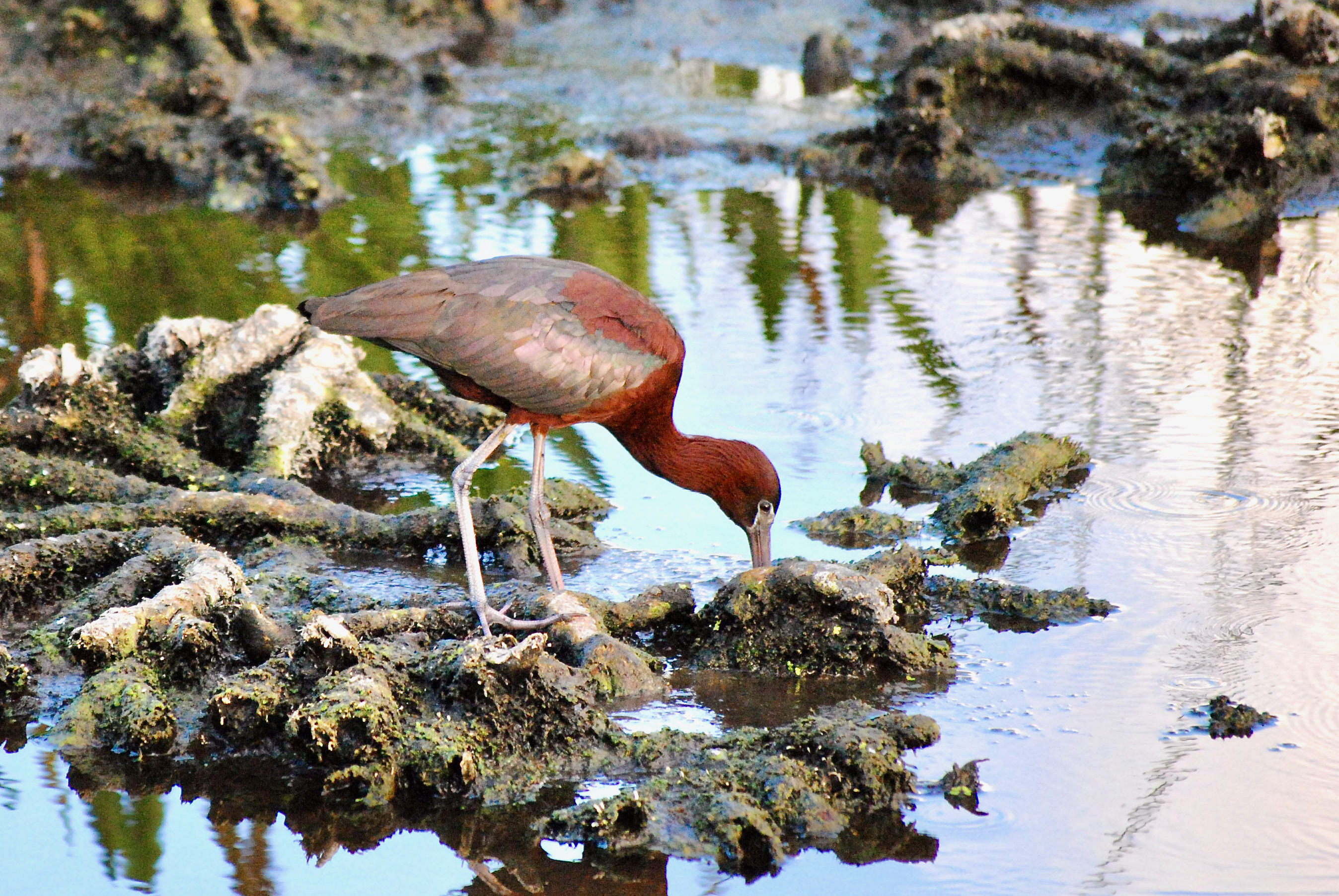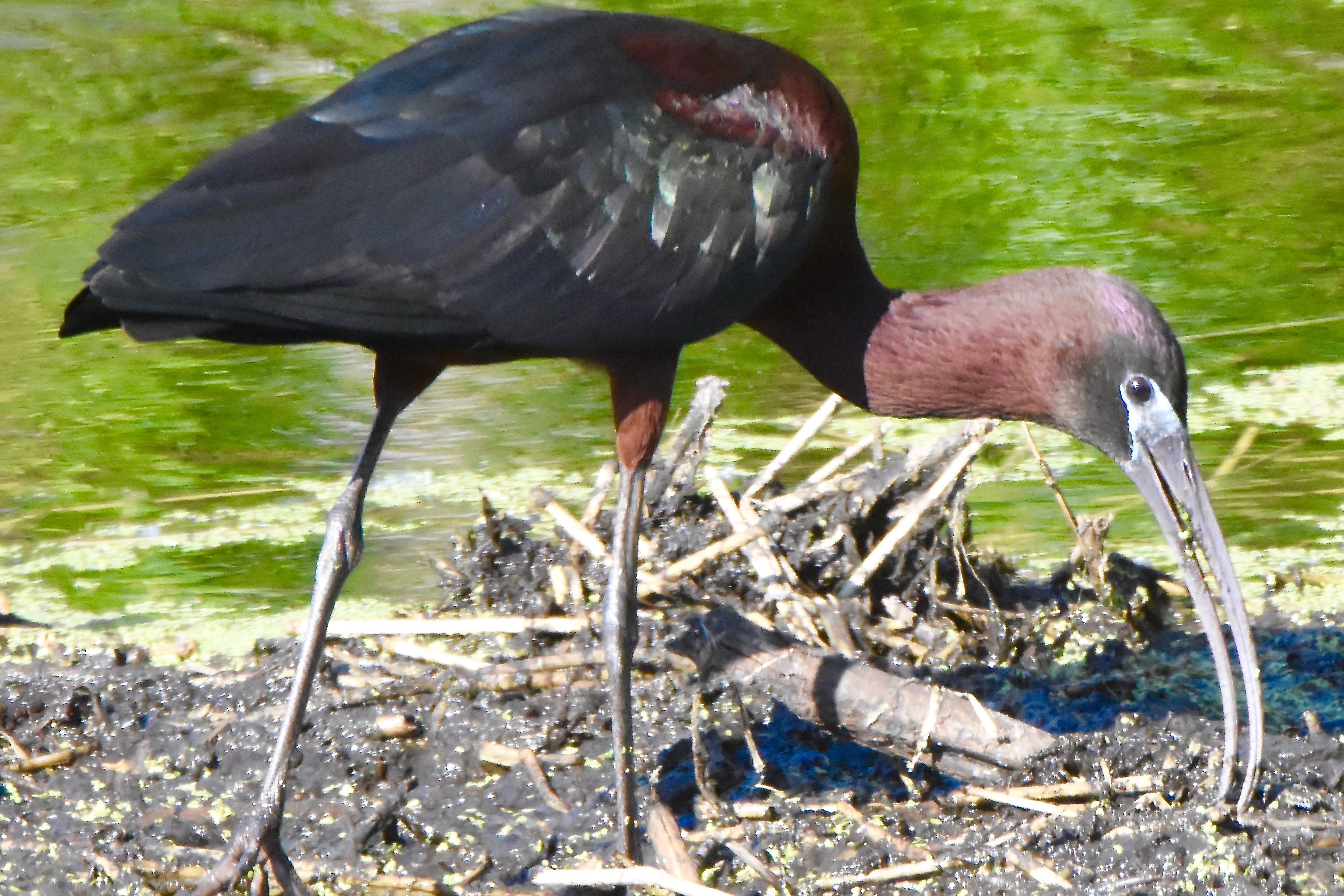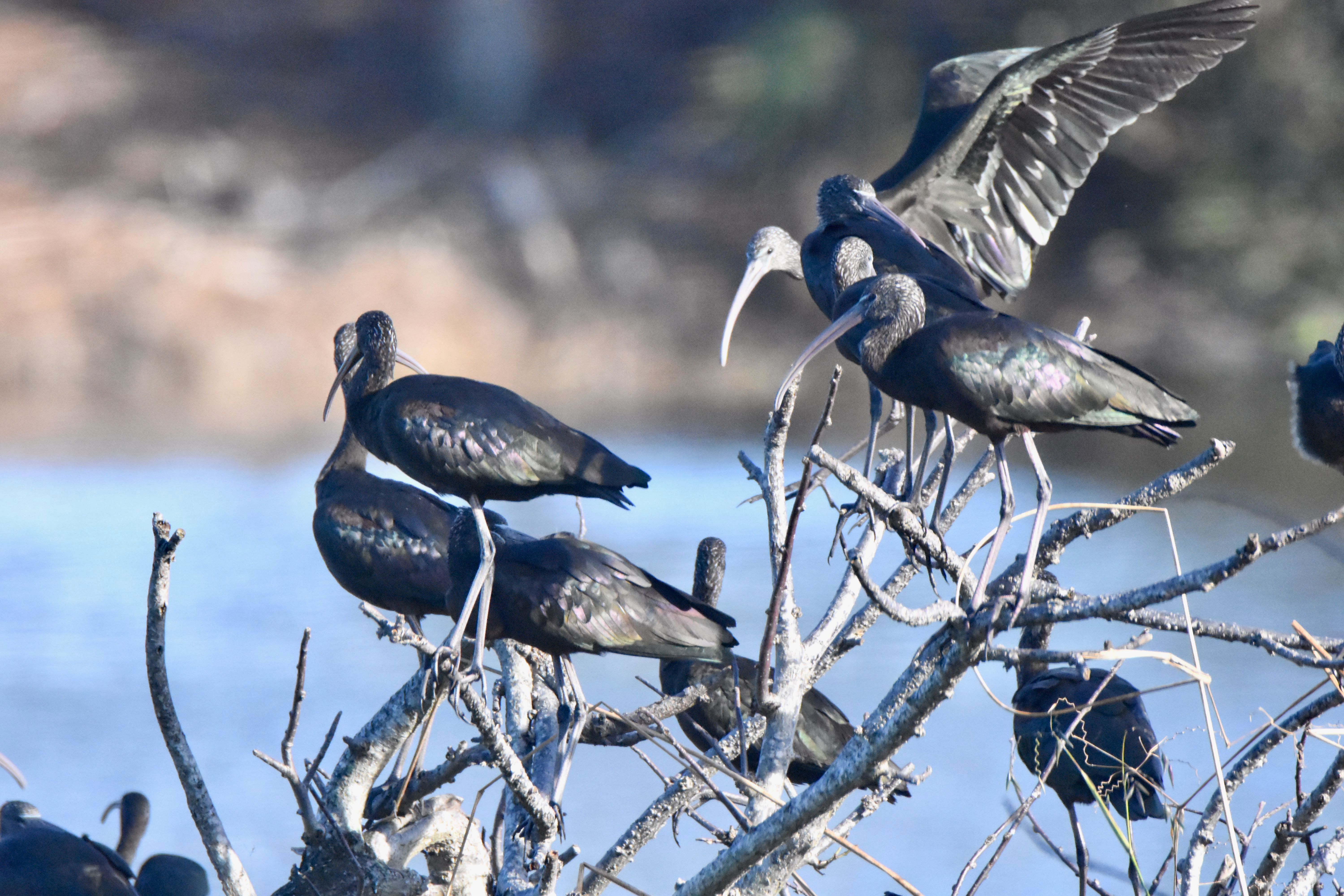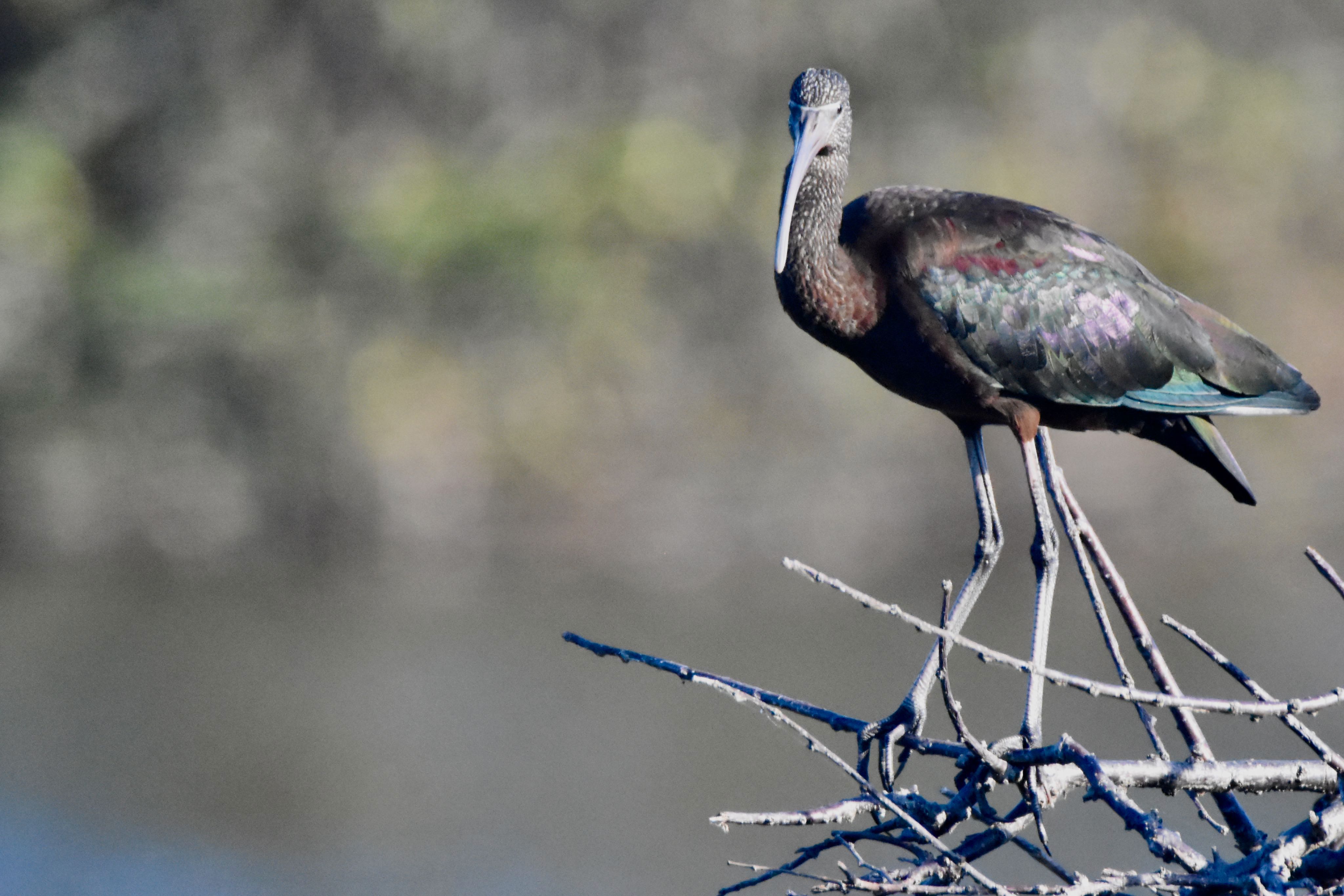
Glossy ibis, photographed at Green Cay Nature Center, Boynton Beach, Palm Beach County, in May 2010.
The glossy ibis, Plegadis falcinellus, is truly one cosmopolitan bird. It's found year-round in Florida but it also makes its home in Europe, Africa, Asia and Australia, as well as the Caribbean, the Yucatan and Venezuela.
The theory goes it originated in the Old World and rode the tradewinds across the Atlantic to the New World some time duing the last few centuries.
It's similar to the white Ibis in size, shape, habitat and in the way it forages. Both birds can be found patrolling South Florida's marshes, often together. They are members of the same family, Threskiornithidae (ibises and spoonbills), but not the same genus. The closest relative to the glossy is the white-faced ibis, which is nearly identical aside from some different coloration in the face and on the legs. The white-faced is more of a western bird and doesn't make its way to Florida.
Glossies can be found throughout Florida. They're common birds but not nearly as numerous as the white ibis and not as likely to be seen away from marshes. Their range also includes the Gulf Coast to Louisiana and up the Atlantic into New England. North of the Carolinas, however, glossies become migratory. And while they're coastal birds, they've been known to wander inland.
Glossies forage with a probing style in shallow water and along mud flats similarly to the white ibis and for similar food: insects, crayfish, leeches, frogs, fish and the occasional snake. They also will pick up items on the surface that they see.
They often breed in colonies with other wading birds, nesting on the ground in dense vegetation or in trees and thickets on or near water. Males and females split nest-building duties. A clutch typically is three or four eggs; both parents sit on the eggs, and both feed their offspring. By two or three weeks, young glossies move about the nest site; by four or five, they make their first attempts to fly. By seven, they become accomplished aviators and will tag along with their parents to forage.
Glossies are iridescent reds that flash blues and greens in the right light. They have a white face mask around the eyes and a long, curved bill. They can exceed two feet in body length.
Globally, glossy populations are secure. The International Union for Conservation of Nature rates the glossy a "least concern" on its extinction scale. However, loss of habitat, habitat degradation, pesticides and oil spills are threats.
Green Cay Nature Center



